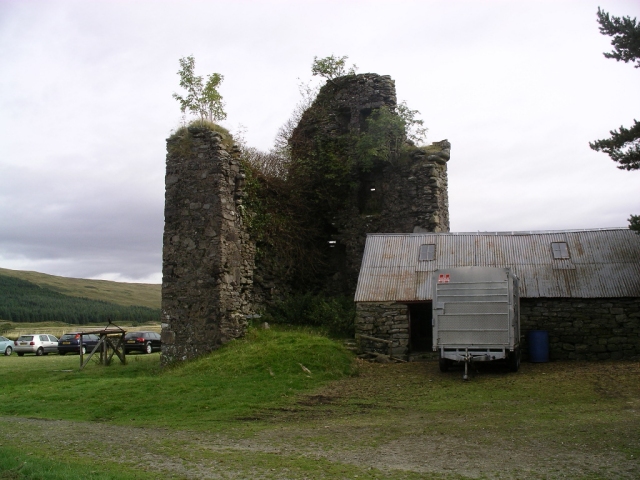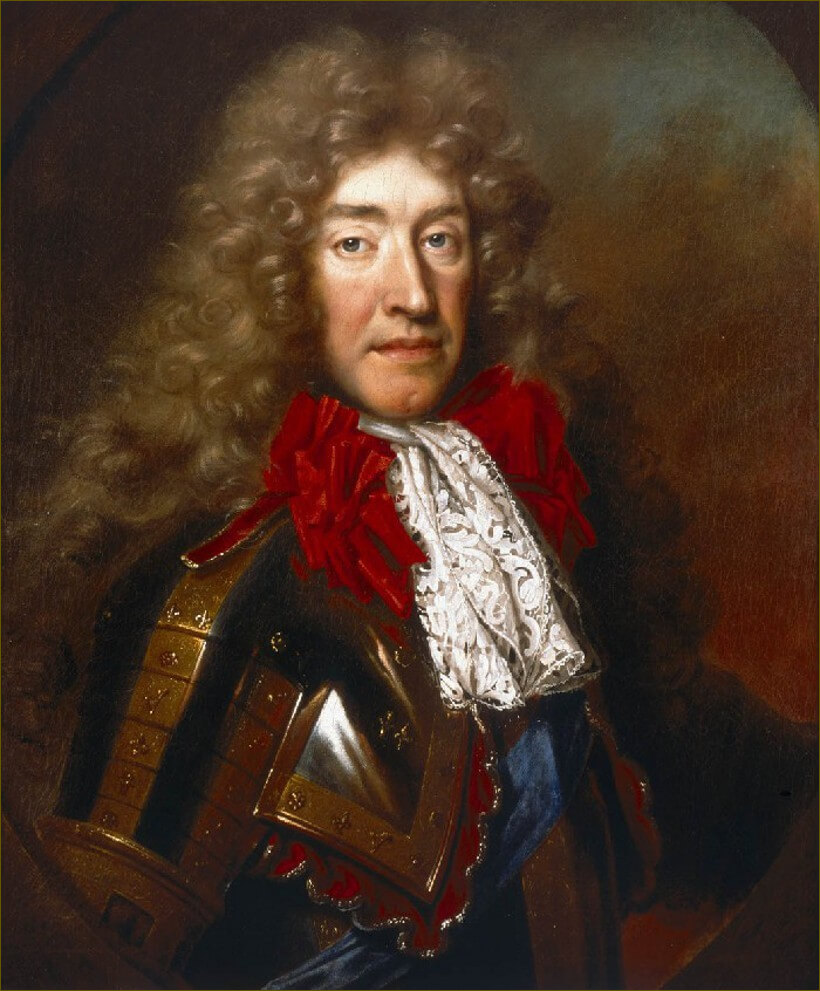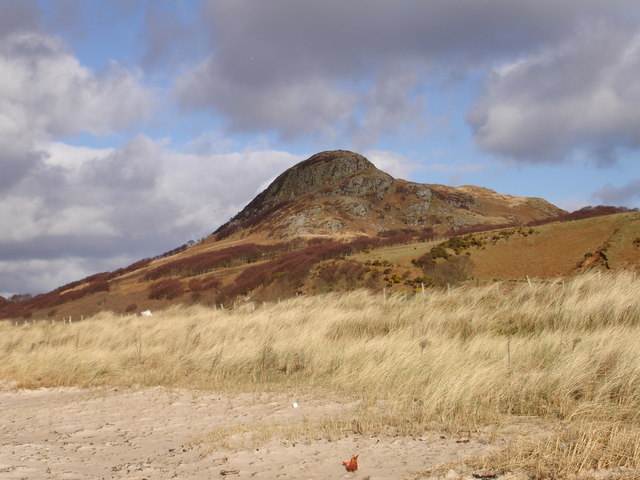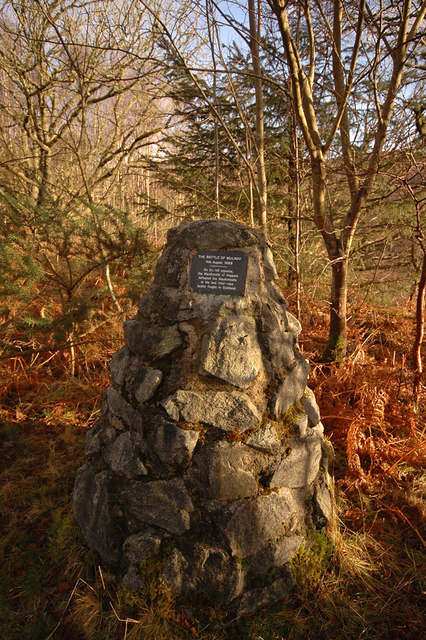|
Massacre Of Glencoe
The Massacre of Glencoe took place in Glen Coe in the Argyll region of the Scottish Highlands on 13 February 1692. An estimated 30 members and associates of Clan MacDonald of Glencoe were killed by Scottish government forces, allegedly for failing to pledge allegiance to the new monarchs, William II/III and his wife Mary II. Although the Jacobite rising of 1689 had largely been suppressed by May 1690, a continuing need to police the Highlands diverted military resources from the Nine Years' War in Flanders. In late 1690, clan leaders loyal to the exiled House of Stuart agreed to swear allegiance to William and Mary, in return for a cash payment of £12,000. However, disagreements over how to divide this meant by December 1691 none of the clans had taken the oath. In response, Lord Stair, Scottish Secretary of State, decided to show the consequences of further delay. While others, including the Keppoch MacDonalds, also missed the deadline, the Glencoe MacDonalds appear to ... [...More Info...] [...Related Items...] OR: [Wikipedia] [Google] [Baidu] |
Jacobite Rising Of 1689
The Jacobite rising of 1689 was a conflict fought primarily in the Scottish Highlands, whose objective was to put James II of England, James VII back on the throne, following his deposition by the November 1688 Glorious Revolution. Named after "Jacobus", the Latin for James, his supporters were known as 'Jacobites' and the associated political movement as Jacobitism. The 1689 rising was the first of a series of rebellions and plots seeking to restore the House of Stuart that continued into the late 18th century. Part of the wider European conflict known as the Nine Years' War, the Scottish revolt was intended to support the 1689 to 1691 Williamite War in Ireland. Despite a decisive Jacobite victory at Battle of Killiecrankie, Killiecrankie in July 1689, their charismatic leader John Graham, 1st Viscount Dundee was killed in the final attack. His death, combined with limited internal or external support, meant the rising never presented a real threat to the new administration of ... [...More Info...] [...Related Items...] OR: [Wikipedia] [Google] [Baidu] |
Jacobitism
Jacobitism was a political ideology advocating the restoration of the senior line of the House of Stuart to the Monarchy of the United Kingdom, British throne. When James II of England chose exile after the November 1688 Glorious Revolution, the Parliament of England ruled he had "abandoned" the English throne, which was given to his Protestant daughter Mary II of England, and his nephew, her husband William III of England, William III. On the same basis, in April the Convention of Estates (1689), Scottish Convention awarded Mary and William the throne of Scotland. The Revolution created the principle of a contract between monarch and people, which if violated meant the monarch could be removed. A key tenet of Jacobitism was that kings were appointed by God, making the post-1688 regime illegitimate. However, it also functioned as an outlet for popular discontent, and thus was a complex mix of ideas, many opposed by the Stuarts themselves. Conflict between Charles Edward Stuar ... [...More Info...] [...Related Items...] OR: [Wikipedia] [Google] [Baidu] |
Williamite War In Ireland
The Williamite War in Ireland took place from March 1689 to October 1691. Fought between Jacobitism, Jacobite supporters of James II of England, James II and those of his successor, William III of England, William III, it resulted in a Williamite victory. It is generally viewed as a related conflict of the 1688 to 1697 Nine Years' War. The November 1688 Glorious Revolution replaced the Catholic James with his Protestant daughter Mary II and her husband William, who ruled as joint monarchs of Kingdom of England, England, Kingdom of Ireland, Ireland, and Kingdom of Scotland, Scotland. However, James retained considerable support in largely Catholic Ireland, where it was hoped he would address long-standing grievances on land ownership, religion, and civic rights. The war began in March 1689 with a series of skirmishes between James's Irish Royal Army, Irish Army, which had stayed loyal in 1688, and Army of the North (Ireland), Protestant militia. Fighting culminated in the siege o ... [...More Info...] [...Related Items...] OR: [Wikipedia] [Google] [Baidu] |
Glorious Revolution In Scotland
Prior to 1707, Scotland and England shared a common monarch but were separate legal entities, so decisions in one did not bind the other. In both countries, the Glorious Revolution, in which James VII (II in England) was replaced by his daughter Mary II and her husband William of Orange as joint monarchs, confirmed the primacy of Parliament over the Crown, while the Church of Scotland was re-established as a presbyterian rather than episcopalian polity. Although James became king in February 1685 with widespread support in both countries, tolerance for his personal Catholicism did not apply to the religion in general. When the Parliaments of England and Scotland refused to rescind legal restrictions on Catholics, James suspended them and ruled by decree. The birth of a Catholic heir in June 1688 caused widespread civil disorder in Scotland and England and a coalition of English politicians and soldiers issued an Invitation to William. They agreed to support Dutch military ... [...More Info...] [...Related Items...] OR: [Wikipedia] [Google] [Baidu] |
James VII And II
James II and VII (14 October 1633 – 16 September 1701) was King of England and Ireland as James II and King of Scotland as James VII from the death of his elder brother, Charles II, on 6 February 1685, until he was deposed in the 1688 Glorious Revolution. The last Catholic monarch of England, Scotland, and Ireland, his reign is now remembered primarily for conflicts over religion. However, it also involved struggles over the principles of absolutism and divine right of kings, with his deposition ending a century of political and civil strife by confirming the primacy of the English Parliament over the Crown. James was the second surviving son of Charles I of England and Henrietta Maria of France, and was created Duke of York at birth. He succeeded to the throne aged 51 with widespread support. The general public were reluctant to undermine the principle of hereditary succession after the trauma of the brief republican Commonwealth of England 25 years before, and believed t ... [...More Info...] [...Related Items...] OR: [Wikipedia] [Google] [Baidu] |
Kintyre
Kintyre (, ) is a peninsula in western Scotland, in the southwest of Argyll and Bute. The peninsula stretches about , from the Mull of Kintyre in the south to East Loch Tarbert, Argyll, East and West Loch Tarbert, Argyll, West Loch Tarbert in the north. The region immediately north of Kintyre is known as Knapdale. Kintyre is long and narrow, at no point more than from west coast to east coast, and is less than wide where it connects to Knapdale at the north. Kintyre is the lower Firth of Clyde western coast and protects the Firth from the Atlantic Ocean. The southerly tip of Kintyre is on the North Channel (Great Britain and Ireland), North Channel that separates southwestern Scotland from Northern Ireland. The east side of the Kintyre Peninsula is bounded by Kilbrannan Sound, with a number of coastal peaks such as Torr Mor. The central spine of the peninsula is mostly hilly moorland, the highest point being Beinn an Tuirc at . The coastal areas and hinterland, however, are ... [...More Info...] [...Related Items...] OR: [Wikipedia] [Google] [Baidu] |
Cowal
Cowal () is a rugged peninsula in Argyll and Bute, on the west coast of Scotland. It is connected to the mainland to the north, and is bounded by Loch Fyne to the west, by Loch Long and the Firth of Clyde to the east, and by the Kyles of Bute to the south. Argyll is the historic county that the Cowal peninsula was within. Inveraray was the county town. The northern part of the peninsula is covered by Argyll Forest Park and also includes the Arrochar Alps. In the south, the peninsula is divided into three forks by Loch Striven and Loch Riddon. Cowal's only burgh is Dunoon in the south-east, from which ferries sail to Gourock in Inverclyde. Other ferries run from Portavadie in the west to Tarbert in Kintyre, and from Colintraive in the south to Rhubodach on Bute. Much of Cowal was once held by the Lamont clan. Later, the Campbells came to be one of the most powerful families in Cowal. The highest point on the peninsula is Beinn an Lochain in the Arrochar Alps, a ... [...More Info...] [...Related Items...] OR: [Wikipedia] [Google] [Baidu] |
Argyll's Rising
Argyll's Rising, also known as Argyll's Rebellion, was an attempt in June 1685 to overthrow James II of England, James II and VII. Led by Archibald Campbell, 9th Earl of Argyll, the rising was intended to tie down Royal forces in Scotland while a Monmouth Rebellion, simultaneous rebellion under James Scott, 1st Duke of Monmouth began in England. Both rebellions were backed by dissident Protestants opposed to the accession of the Roman Catholic James to the throne. Argyll, chief of Clan Campbell, planned to raise several thousand men from his own estates and expected to receive additional support from Presbyterian dissidents. He sailed from Holland on 2 May with around 300 men, but on landing in Scotland attracted few recruits. Hampered by Argyll's inexperience as a commander and disagreements amongst the rebel leaders, and pursued by government militia under the John Murray, 1st Marquess of Atholl, Marquess of Atholl, the rebels began to disperse in mid June after an abortive inv ... [...More Info...] [...Related Items...] OR: [Wikipedia] [Google] [Baidu] |
John Murray, 1st Marquess Of Atholl
John Murray, 1st Marquess of Atholl, KT (2 May 16316 May 1703) was a leading Scottish royalist and defender of the Stuarts during the English Civil War of the 1640s, until after the rise to power of William and Mary in 1689. He succeeded as 2nd Earl of Atholl The Mormaer or Earl of Atholl was the title of the holder of a medieval comital lordship straddling the highland province of Atholl (''Ath Fodhla''), now in northern Perthshire. Atholl is a special Mormaerdom, because a King of Atholl is repor ... on his father's demise in June 1642 and as 3rd Earl of Tullibardine after the death of his first cousin the 2nd Earl in 1670. Early life Murray was the son of John Murray, 1st Earl of Atholl (cr. 1629) by his wife Jane, daughter of Duncan Campbell of Glenorchy. In 1650 he joined in the unsuccessful attempt to liberate Charles II of England, Charles II from the Covenanters, and he was, in 1653, a chief supporter of the William Cunningham, 8th Earl of Glencairn, 8th Ear ... [...More Info...] [...Related Items...] OR: [Wikipedia] [Google] [Baidu] |
Conventicle
A conventicle originally meant "an assembly" and was frequently used by ancient writers to mean "a church." At a semantic level, ''conventicle'' is a Latinized synonym of the Greek word for ''church'', and references Jesus' promise in Matthew 18:20, "Where two or three are ''met together'' in my name." Over time, the term became linked to meetings of religious associations, particularly private gatherings for worship. Later, it became a negative term, implying that those within a conventicle opposed the ruling ecclesiastical authorities; for example, as applied to a plot of mutinous monks in a monastery. Ultimately, this term has been applied to religious meetings of dissenters from an Established Church, established church, held in places that were not recognized as intended for the exercise of religious functions. In this context, the state made a distinction between the forms of religion whose practices were authorized by statute, and those that were expressly prohibited. This ... [...More Info...] [...Related Items...] OR: [Wikipedia] [Google] [Baidu] |
Independent Highland Companies
The Independent Highland Companies were irregular militia raised from the Scottish clans of the Scottish Highlands by order of the Scottish (later British) government between 1603 and 1760 in order to help keep the peace and enforce the law in the Highlands and were recognized as such by the government. The officers of the Independent Highland Companies were commissioned as officers of the British Army but the independent companies were not recognized as official regiments of the line of the army. The Independent Highland Companies were the progenitors of the Highland Regiments of the British Army that began when ten Independent Highland Companies were embodied to form the Earl of Crawford's Highland Regiment that was numbered the 43rd Regiment of Foot in 1739. Early independent companies The first independent companies are generally regarded to have been formed after the Union of the Crowns in 1603 when James VI of Scotland became James I of England. It was thought that firm ... [...More Info...] [...Related Items...] OR: [Wikipedia] [Google] [Baidu] |
Clan Cameron
Clan Cameron is a West Scottish Highlands, Highland Scottish clan, with one main branch Lochiel, and numerous cadet branches. The Clan Cameron lands are in Lochaber, and within their lands lies Ben Nevis, the highest mountain in the British Isles. The Chief of the clan is customarily referred to as simply "Lochiel". History Origins Like with many clans, the origins of Clan Cameron's chiefly family are uncertain and there are several theories, as well as fanciful origin legends. One such legend claims that Lochiel, like the Royal House of Stuart, was descended from Banquo, Thane of Lochaber (specifically the progeny of "his sister Marion who married one Angus"). The first chief may have been called ''Cameron'' from his crooked nose (, cf. wikt:Camshron#Scottish_Gaelic, ''Camshron''); such nicknames were common in Highland Gaelic culture, and his descendants would have then adopted the name. [...More Info...] [...Related Items...] OR: [Wikipedia] [Google] [Baidu] |









